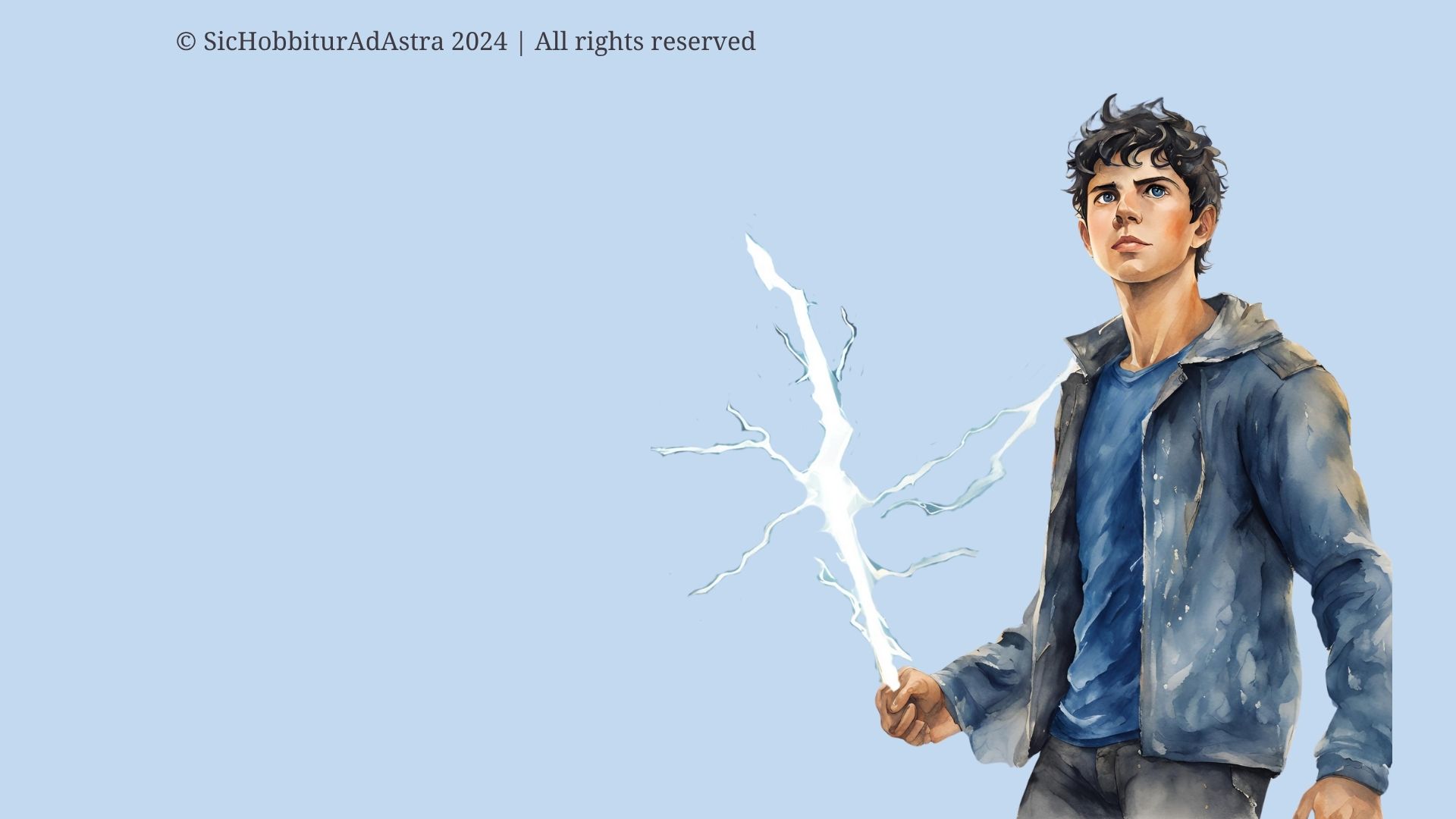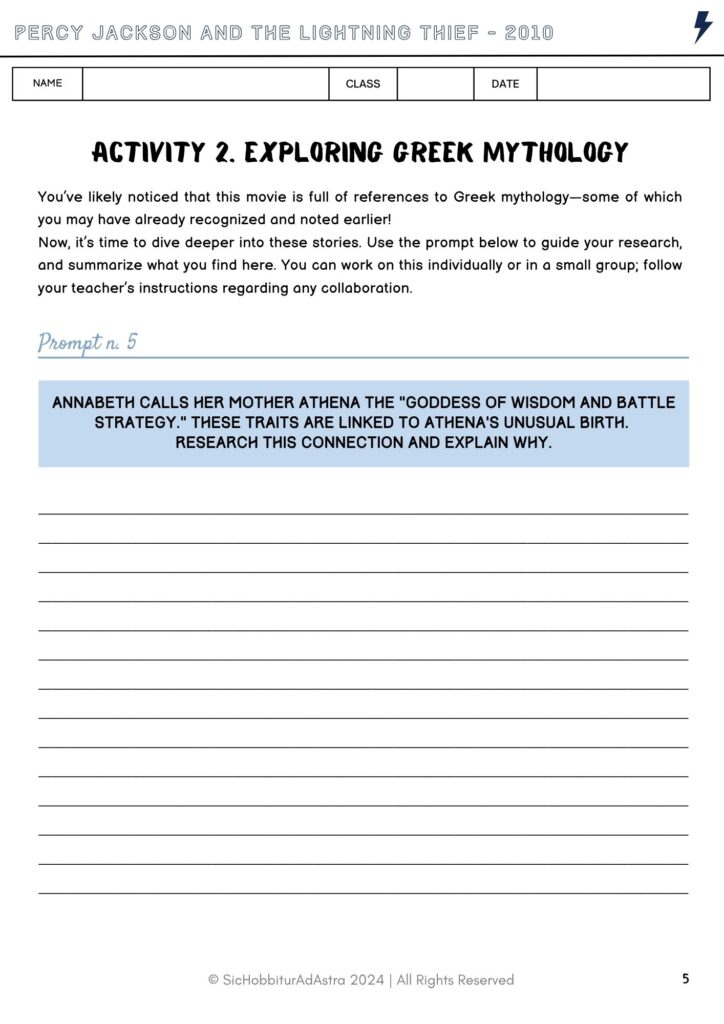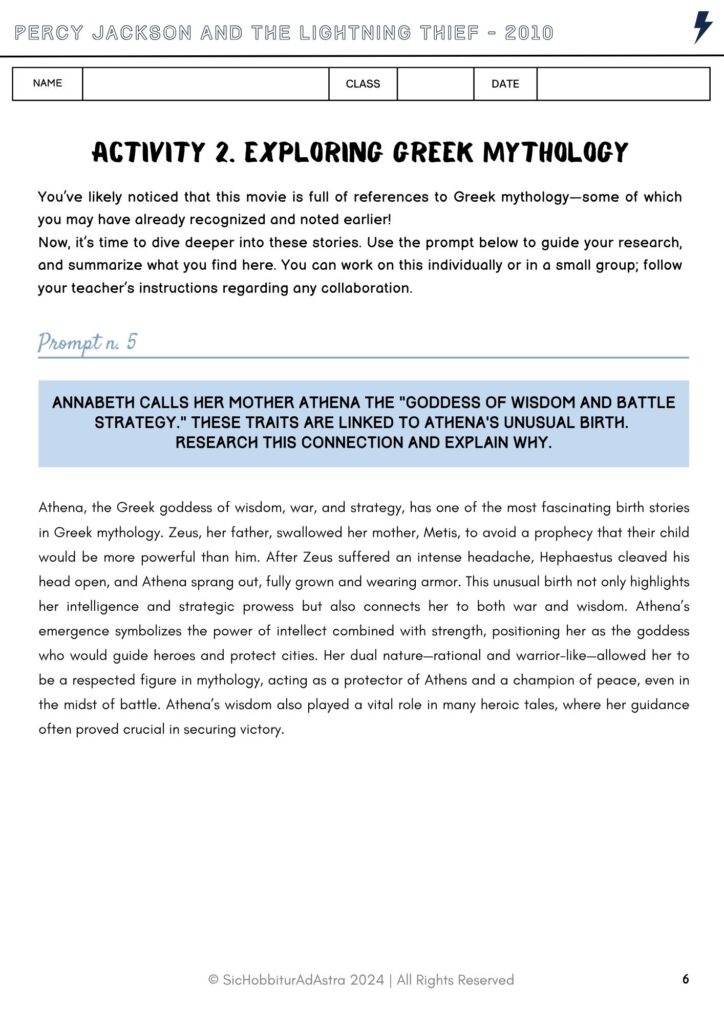
For many middle school students, ancient mythology comes alive not through textbooks, but through the magic of stories—especially those told on screen. Percy Jackson and the Olympians: The Lightning Thief (2010) offers a unique chance to explore classical mythology through a contemporary lens. It engages students while enriching their understanding of the Greek epic tradition.
Instead of treating the film as just a reward or filler, educators can transform it into a meaningful learning experience. The movie—based on Rick Riordan’s popular novel—presents numerous mythological references that can be analyzed and discussed in class. It’s ideal for reviewing content already covered, introducing students to new figures, or providing a refreshing interlude during more intensive units.
Bringing Myth to Life
The film introduces a wide range of mythological elements in a format that is both accessible and appealing to middle school learners. From encounters with Medusa and the Hydra to visits to the Underworld and Mount Olympus, each scene offers rich material for classroom discussion and reflection.
Some teachers may use the film to reinforce previously studied topics—such as the role of gods and monsters in Greek mythology. Others might find it useful as a springboard for new content. Minor figures like Medusa, Charon, and the Lotus-eaters, often omitted from traditional curriculum outlines, can be revisited or introduced easily thanks to their compelling portrayal in the film.
A Closer Look: What Kind of Activity Can the Film Inspire?
One way to guide students into deeper exploration is to build prompts around key scenes. For example, Annabeth refers to her mother Athena as the “goddess of wisdom and battle strategy”. This phrase opens up fascinating connections to the myth of Athena’s birth.
This kind of activity is just one example of how The Lightning Thief can be used to prompt rich, mythology-centered conversations in class.
Exploring Themes of Divinity and Mortality
Beyond the action-packed storyline, The Lightning Thief also presents an opportunity to reflect on deeper themes, particularly the relationship between mortals and gods. The dynamic between Percy and his father Poseidon mirrors key aspects of Greek religiosity: the separation between the thanatoi (mortals) and the athanatoi (immortals), and the often distant, unpredictable involvement of the gods in human affairs.
Students can be encouraged to consider how this relationship compares with modern religious or familial expectations, and how the Olympians’ behaviors reflect the values, fears, and hopes of ancient Greek society. Why are the gods so powerful, yet often flawed? What does it mean for a mortal to be the child of a god? How do those themes echo across other mythological narratives?
Teachers might also connect these reflections to larger epic narratives, such as the Iliad:
“Ah unhappy pair, wherefore gave we you to king Peleus,
to a mortal, while ye are ageless and immortal?
Was it that among wretched men ye too should have sorrows?
For in sooth there is naught, I ween, more miserable
than man among all things that breathe and move upon earth.”
I find this excerpt particularly powerful for classroom discussion, as it perfectly captures the complex relationship between mortals and gods in Ancient Greece—and it resonates deeply with themes explored in the film.
Flexible Use Across the Curriculum
The film can be used at various points in the school year:
- At the beginning of a mythology or epic poetry unit, to spark interest and introduce core concepts.
- As a mid-year breather, while still engaging students in critical thinking and analysis.
- At the end of a unit, to review and synthesize key figures and themes.
- For enrichment, offering students a broader perspective on lesser-known characters or motifs.
With guided support, students can move beyond passive viewing to actively engage with the material—identifying mythological elements, making connections to prior knowledge, and reflecting on the enduring power of these ancient stories.
Ready-to-Use Resource for Myth Exploration
To support this approach, I’ve created a classroom-ready resource designed to help teachers get the most out of The Lightning Thief film experience:
This resource includes:
- Engaging mythology-focused activities and research prompts
- Film comprehension questions to check understanding and stimulate discussion
- A practical teacher guide with instructions and suggestions for classroom use
- Printable and digital formats for flexible implementation
Whether you’re using the film to kick off your mythology unit or to enrich it, this tool ensures that learning remains focused, thoughtful, and aligned with curricular goals.
Let the gods walk among your students—just for a class period or two.
And what are your go-to tips to teach mythology to middle schoolers? If you like, you can share your thoughts in the comment box below.
Thank you for stopping by, and happy teaching!
Chiara





